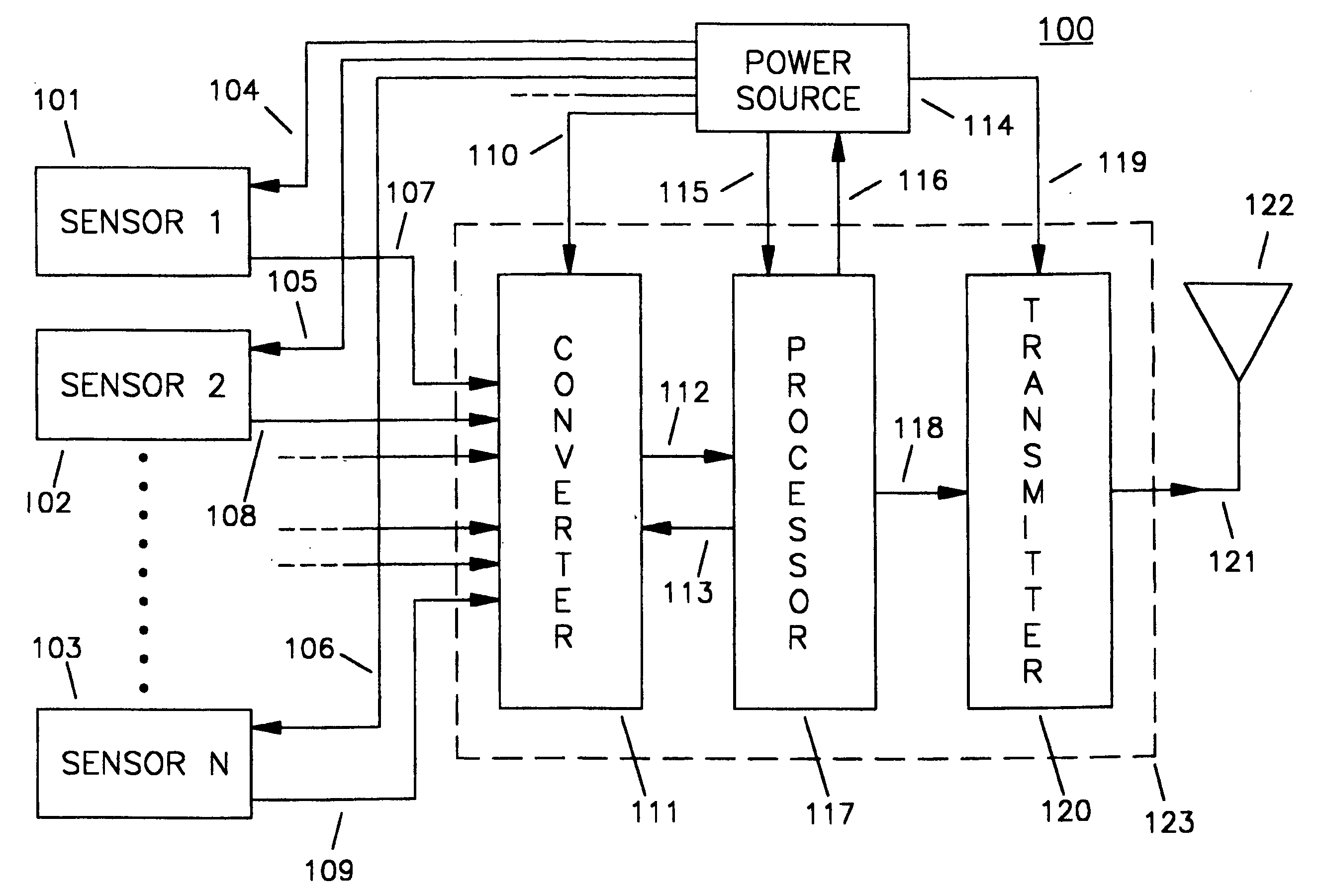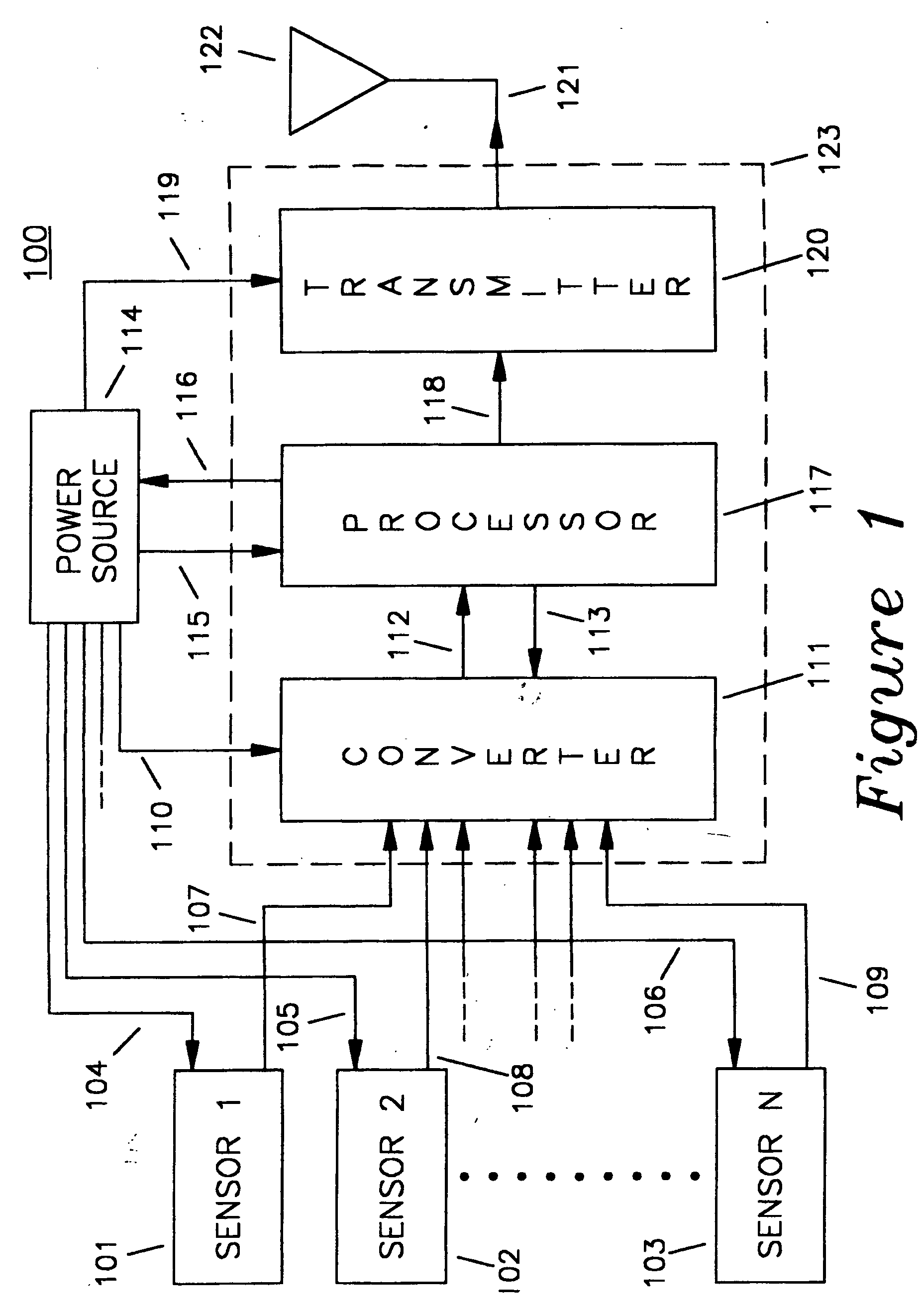Wireless instrument for the remote monitoring of biological parameters and methods thereof
- Summary
- Abstract
- Description
- Claims
- Application Information
AI Technical Summary
Benefits of technology
Problems solved by technology
Method used
Image
Examples
Embodiment Construction
[0016] Referring to FIG. 1, the present invention of a wireless instrument for monitoring a plurality of biological parameters is described in schematic form. A series of sensors beginning with a first sensor 101, a second sensor 102, and ending with a last sensor 103 each measure their respective biological parameters and generate signals that represent the measure of their respective biological parameters. The first sensor 101 generates a first signal 107, the second sensor 102 generates a second signal 108, and the last sensor 103 generates a last signal 109. In addition to the measurement of biological parameters, one or more sensors may be used for the monitoring of one or more performance parameters of the wireless instrument itself. The first signal 107, second signal 108, and last signal 109 are then conducted to a converter 111 which selects the signals individually, converts the signals to a digital format when necessary, and generates a digital output signal 112 which is ...
PUM
 Login to View More
Login to View More Abstract
Description
Claims
Application Information
 Login to View More
Login to View More - R&D
- Intellectual Property
- Life Sciences
- Materials
- Tech Scout
- Unparalleled Data Quality
- Higher Quality Content
- 60% Fewer Hallucinations
Browse by: Latest US Patents, China's latest patents, Technical Efficacy Thesaurus, Application Domain, Technology Topic, Popular Technical Reports.
© 2025 PatSnap. All rights reserved.Legal|Privacy policy|Modern Slavery Act Transparency Statement|Sitemap|About US| Contact US: help@patsnap.com



